18th Century George III Mahogany Wine Cooler or Cellarette
£4,600
Request Information
Follow Us
18th Century George III Mahogany Wine Cooler or Cellarette
A fine and well-figured George III mahogany hexagonal wine cooler or cellarette on the original stand, C. 1770 England. In the manner of Thomas Chippendale.
There is always something charming about this sort of cellarette and its hexagonal shape is incredibly versatile. It is a great piece for a drawing-room, dining room or hall, working well as a lamp table, wine table or on as a small pier table with a vase.
The original leather-bound casters raise the reeded mahogany legs, each with c-scroll ears joining the original moulded superstructure of the stand.
The cellarette itself is fitted with the original brass strapwork to the lower and upper of the figured mahogany body and retains the original axe head carrying handles to the sides.
The top is fitted with a well-chosen piece of mahogany, brass-bound and centred with the original axe head handle.
There is a wine cooler of similar form by Thomas Chippendale at Paxton House. Illustrated in Christopher Gilberts ‘The Life and Works of Thomas Chippendale, page 79, plate:124.
Condition
Good. Wear consistent with age and use.
Dimensions
Height: 29.53 in. (75 cm)
Width: 16.93 in. (43 cm)
Depth: 16.93 in. (43 cm)
PREVIOUSLY SOLD

17th-Century miniature table cabinet
The miniature table cabinet opens to an arrangement of drawers, a row of four, a bank of four and a long pen drawer, similarly veneered in oysters of olive.

A Delightful Mid 18th Century Irish Mahogany Console Table of Small Proportions (29”) Circa 1750-1760.
A Rare Mid 18th-Century Irish Mahogany Console Table of Small Proportions (29”)
With Moulded Edged Calacatta Rosati Marble.
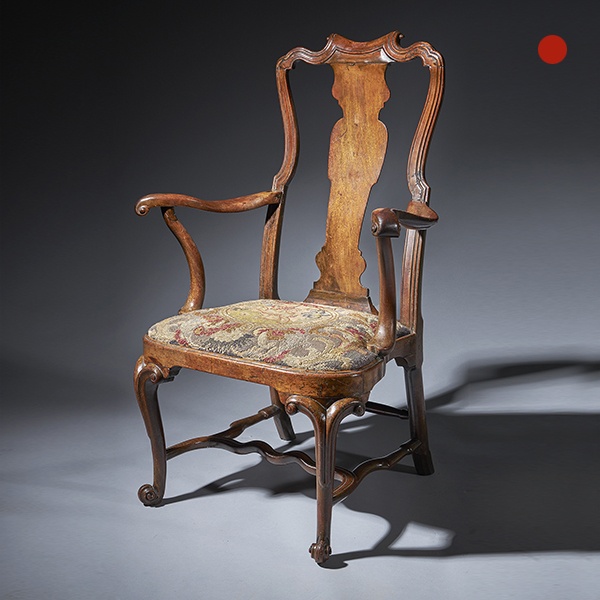
An extraordinary George I walnut armchair Circa 1725, England
An extraordinary George I walnut armchair of fabulous colour, form and patination. The chair is of the most lively shapes being either carved or turned.

A fine burr walnut George I dressing mirror. Circa 1715-25 England.
A fine burr walnut George I dressing mirror Circa 1715-25 England. SoldFollow UsA fine burr walnut George I antique dressing mirror An extremely rare and fine George I burr walnut dressing mirror raised on ball and bracket feet. The drawer...
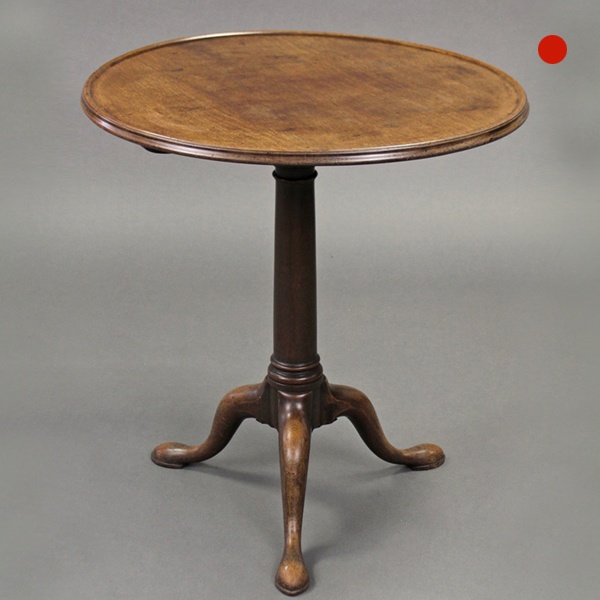
George III Mahogany Gun Barrel Tray Top Tripod Table Sofa Table Chippendale Period
A George III Mahogany Gun Barrel Tray Top Tripod Table, Sofa Table, Chippendale Period, circa 1770-1790, England. The circular tray top with moulded edge is raised on a gun-barrel centre column and cabriole legs with shaped pad feet.

George III Chippendale Period Mahogany Pie Crust Tray
A fine George III Chippendale period mahogany pie crust tray, circa 1770, England. Of circular form, with a carved and shaped edge. Alexander George Fine Antique sell 18th & 19th century antique English furniture.

17th-Century miniature table cabinet
The miniature table cabinet opens to an arrangement of drawers, a row of four, a bank of four and a long pen drawer, similarly veneered in oysters of olive.

A Delightful Mid 18th Century Irish Mahogany Console Table of Small Proportions (29”) Circa 1750-1760.
A Rare Mid 18th-Century Irish Mahogany Console Table of Small Proportions (29”)
With Moulded Edged Calacatta Rosati Marble.

An extraordinary George I walnut armchair Circa 1725, England
An extraordinary George I walnut armchair of fabulous colour, form and patination. The chair is of the most lively shapes being either carved or turned.

A fine burr walnut George I dressing mirror. Circa 1715-25 England.
A fine burr walnut George I dressing mirror Circa 1715-25 England. SoldFollow UsA fine burr walnut George I antique dressing mirror An extremely rare and fine George I burr walnut dressing mirror raised on ball and bracket feet. The drawer...

George III Mahogany Gun Barrel Tray Top Tripod Table Sofa Table Chippendale Period
A George III Mahogany Gun Barrel Tray Top Tripod Table, Sofa Table, Chippendale Period, circa 1770-1790, England. The circular tray top with moulded edge is raised on a gun-barrel centre column and cabriole legs with shaped pad feet.

George III Chippendale Period Mahogany Pie Crust Tray
A fine George III Chippendale period mahogany pie crust tray, circa 1770, England. Of circular form, with a carved and shaped edge. Alexander George Fine Antique sell 18th & 19th century antique English furniture.
YOU MAY ALSO LIKE
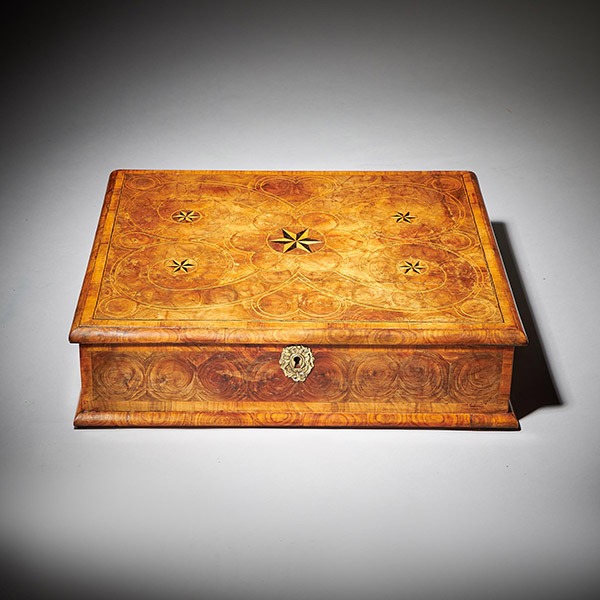
Large William and Mary 17th Century Inlaid Olive Oyster Lace Box, Circa 1690
Large William and Mary 17th Century Inlaid Olive Oyster Lace Box £5,500[wpforms_selector form_id="11387" show_title="on" _builder_version="4.22.1" _module_preset="default" custom_margin="-30px||||false|false" global_colors_info="{}"...
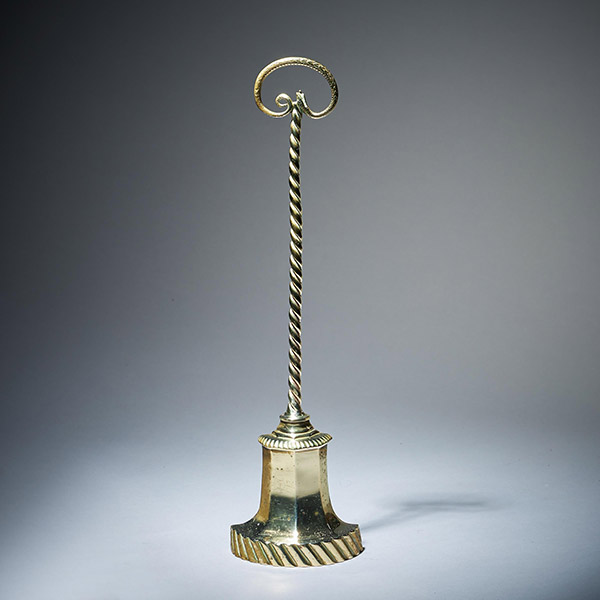
Early 19th Century High Regency Brass Snake Doorstop
Early 19th Century High Regency Brass Snake Doorstop £1,100Follow UsEarly 19th Century High Regency Brass Snake Doorstop A high Regency solid brass bell-shaped doorstop with snake handle, from the reign of George IV, Circa 1770. England The...
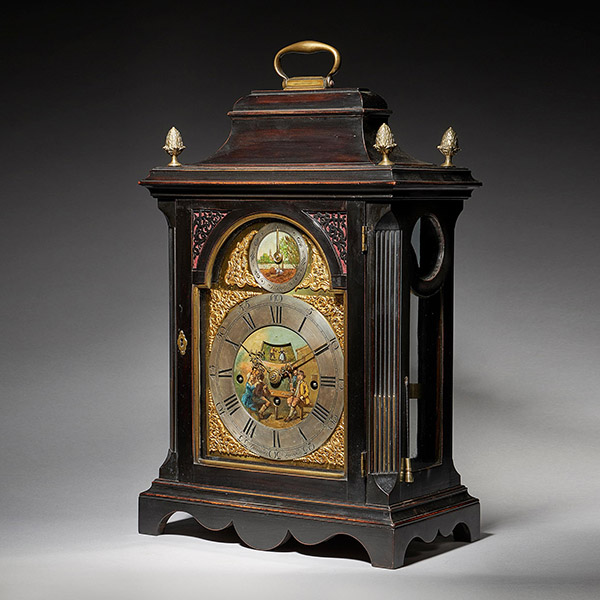
Extremely Rare George III 18th Century Quarter-Striking Bracket Clock, Signed
Extremely Rare George III 18th Century Quarter-Striking Bracket Clock, Signed Follow UsExtremely Rare George III 18th Century Quarter-Striking Bracket Clock, Signed An extremely rare George III 18th century ebonized quarter-striking bracket...

18th Century George III Carved Mahogany Serpentine Concertina Action Card Table
18th Century George III Carved Mahogany Serpentine Concertina Action Card Table £19,800Follow Us18th Century George III Carved Mahogany Serpentine Concertina Action Card Table A bold and impressive George III carved mahogany serpentine...
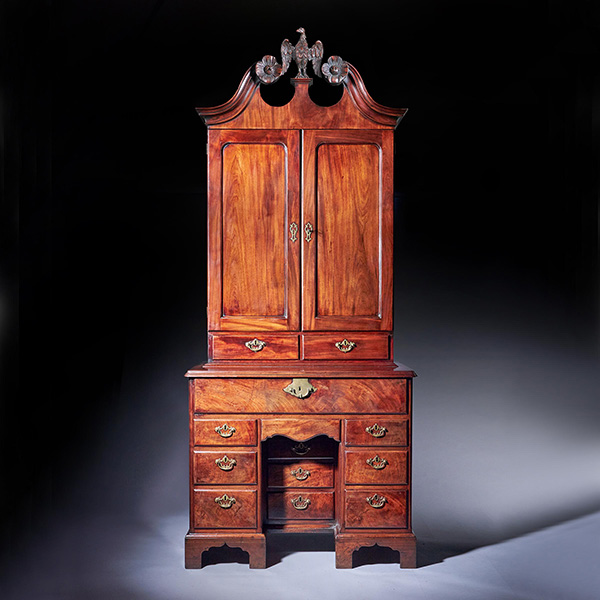
A George II Irish Mahogany Secretaire Kneehole Bookcase Att. C. Hearn
A George II Irish Mahogany Secretaire Kneehole Bookcase Att. C. Hearn £45,900Follow UsA George II Irish Mahogany Secretaire Kneehole Bookcase Att. C. Hearn An original and rare two-part George II 18th century Irish architects figured mahogany...
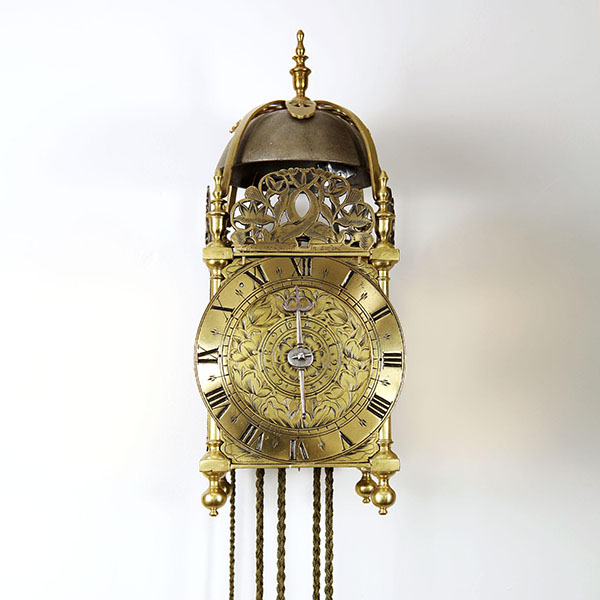
17th Century Lantern Alarm Clock by Johannes Quelch, Oxford
17th Century Lantern Alarm Clock by Johannes Quelch, Oxford £14,000Follow Us17th Century Lantern Alarm Clock by Johannes Quelch, Oxford An English 17th century lantern clock made of brass and iron, circa 1665-1670. The clock consists of going...

Large William and Mary 17th Century Inlaid Olive Oyster Lace Box, Circa 1690
Large William and Mary 17th Century Inlaid Olive Oyster Lace Box £5,500[wpforms_selector form_id="11387" show_title="on" _builder_version="4.22.1" _module_preset="default" custom_margin="-30px||||false|false" global_colors_info="{}"...

Early 19th Century High Regency Brass Snake Doorstop
Early 19th Century High Regency Brass Snake Doorstop £1,100Follow UsEarly 19th Century High Regency Brass Snake Doorstop A high Regency solid brass bell-shaped doorstop with snake handle, from the reign of George IV, Circa 1770. England The...

Extremely Rare George III 18th Century Quarter-Striking Bracket Clock, Signed
Extremely Rare George III 18th Century Quarter-Striking Bracket Clock, Signed Follow UsExtremely Rare George III 18th Century Quarter-Striking Bracket Clock, Signed An extremely rare George III 18th century ebonized quarter-striking bracket...

18th Century George III Carved Mahogany Serpentine Concertina Action Card Table
18th Century George III Carved Mahogany Serpentine Concertina Action Card Table £19,800Follow Us18th Century George III Carved Mahogany Serpentine Concertina Action Card Table A bold and impressive George III carved mahogany serpentine...

A George II Irish Mahogany Secretaire Kneehole Bookcase Att. C. Hearn
A George II Irish Mahogany Secretaire Kneehole Bookcase Att. C. Hearn £45,900Follow UsA George II Irish Mahogany Secretaire Kneehole Bookcase Att. C. Hearn An original and rare two-part George II 18th century Irish architects figured mahogany...

17th Century Lantern Alarm Clock by Johannes Quelch, Oxford
17th Century Lantern Alarm Clock by Johannes Quelch, Oxford £14,000Follow Us17th Century Lantern Alarm Clock by Johannes Quelch, Oxford An English 17th century lantern clock made of brass and iron, circa 1665-1670. The clock consists of going...








